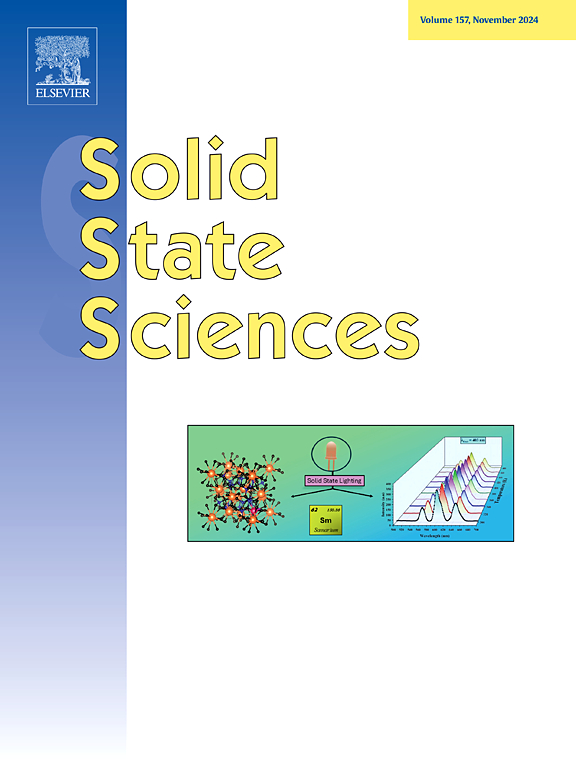Electrocatalytic activity of Cu-Co prussian blue analogue and its calcined derivatives towards OER
IF 3.4
3区 化学
Q2 CHEMISTRY, INORGANIC & NUCLEAR
引用次数: 0
Abstract
Cu-Co prussian blue analogue (Cu-Co:PBA) was synthesized, mixed with graphite and calcined at 550 °C for 4 h to prepare calcined derivative of Cu-Co:PBA and graphite (G@Cu-Co:PBA©). Also, graphite, Cu-Co:PBA and dopant (sodium hypophosphite, thiourea, melamine and glucose for P, S, N and O doping, respectively) were mixed and calcined at a similar procedure to prepare X-doped calcined derivatives of G@Cu-Co:PBA (X-doped:G@Cu-Co:PBA© where X = P, S, N, and O). Then, different modified carbon paste electrodes (CPEs) were fabricated with the prepared materials and their electrocatalytic activities towards oxygen evolution reaction (OER) were investigated in an alkaline medium. The anodic polarization curves of the modified CPEs were recorded and their corresponding Tafel plots were obtained to calculate their onset potentials, Tafel slopes and η10 (the required overpotential to achieve the anodic current density of 10 mA cm−2) as the electrocatalytic performance's criteria to evaluate the effect of calcination and doping on their electrocatalytic activity towards OER. The results revealed that the electrocatalytic performance of CPEs modified with X-doped:G@Cu-Co:PBA© (where X = P, S, N, and O) towards OER improved and their onset potentials and Tafel slopes decreased when CPEs were modified with X-doped in the order O-doped, N-doped, S-doped and P-doped.

求助全文
约1分钟内获得全文
求助全文
来源期刊

Solid State Sciences
化学-无机化学与核化学
CiteScore
6.60
自引率
2.90%
发文量
214
审稿时长
27 days
期刊介绍:
Solid State Sciences is the journal for researchers from the broad solid state chemistry and physics community. It publishes key articles on all aspects of solid state synthesis, structure-property relationships, theory and functionalities, in relation with experiments.
Key topics for stand-alone papers and special issues:
-Novel ways of synthesis, inorganic functional materials, including porous and glassy materials, hybrid organic-inorganic compounds and nanomaterials
-Physical properties, emphasizing but not limited to the electrical, magnetical and optical features
-Materials related to information technology and energy and environmental sciences.
The journal publishes feature articles from experts in the field upon invitation.
Solid State Sciences - your gateway to energy-related materials.
 求助内容:
求助内容: 应助结果提醒方式:
应助结果提醒方式:


